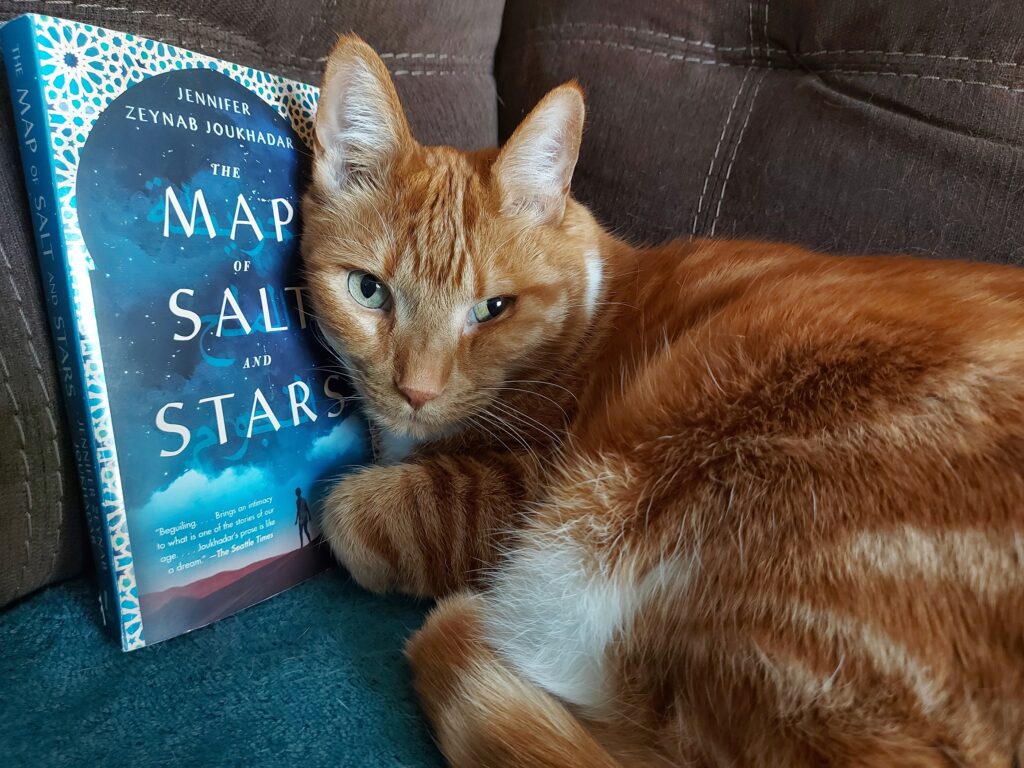The Map of Salt and Stars by Jennifer Zeynab Joukhadar

The Map of Salt and Stars is a moving story about the Syrian refugee crisis. Jennifer Zeynab Joukhadar is Syrian American and she has never been a refugee, but she wrote The Map of Salt and Stars to bring attention to the refugee crisis and to share her grief over the Syrian war and the loss of Syrian people, places and heritage. Her novel also teaches us that home is not a physical place, but rather home lives inside of us. It is in our memories and the stories we tell ourselves and it is in our relationships with our loved ones.
The Map of Salt and Stars is set in 2011, just as the Syrian war is starting, and is told from the perspective of twelve-year-old Syrian American Nour, who has recently lost her beloved Baba (father) to cancer. Nour’s mother decides to move her family back to Syria from New York after her husband’s death to be closer to family members still living there. They are only there for a few months, though, when an airstrike flattens their house and neighbourhood and nearly kills them. They are then forced to flee Syria with what little belongings Nour’s mother is able to salvage out of the wreckage of their home. They attempt to apply for refugee status with the American consulate in Egypt (Nour is the only member of her family who was actually born in the US) but they can’t wait months for their applications to be processed; they need to get somewhere safe quickly.
Nour’s story alternates with that of a twelfth-century girl named Rawiya who runs away from home and disguises herself as a boy so that she can become apprenticed to a famous mapmaker, Abu Abd Allah Muhammad al-Idrisi (al-Idrisi is based on an actual person; Rawiya is, sadly, entirely fictional). Rawiya’s story is full of adventure, heroism and romance; it is also Nour’s favourite story that her Baba used to tell her. Nour is having difficulty coping with the loss of her Baba; she feels that she is losing her connection to him as he is buried all the way in New York. Telling herself Rawiya’s story is her way of keeping her Baba’s spirit alive. As one character in the novel tells Nour, “Don’t forget stories ease the pain of living, not dying. People always think dying is going to hurt. But it does not. It’s living that hurts us.”
The journey that Nour’s family takes through the Middle East and North Africa on their quest for safety follows the same route that Rawiya and al-Idrisi took in their quest to make a map of the world for King Roger II. Nour’s journey is a dangerous one involving war, closed borders, rape, sinking boats, human smuggling and death; a horrific journey for anyone let alone a twelve-year-old girl. It’s hard to believe that people are so against refugees who come to places like Canada or the US looking for a better life. Imagine losing everything you own to circumstances beyond your control, being forced to flee the country you call home, facing thirst, starvation, rape and death in order to make it somewhere safe, just to get locked up in a detention centre and told you might not be able to stay in that safe place after all.
The Map of Salt and Stars, despite being difficult to read at times, is a beautifully written novel. The author has synesthesia and she has made Nour a synesthete as well. Nour’s form of synesthesia is the association of odours with colour, so when she smells something, she also experiences that smell as a colour. This makes Nour’s story even more intense for the reader to experience.